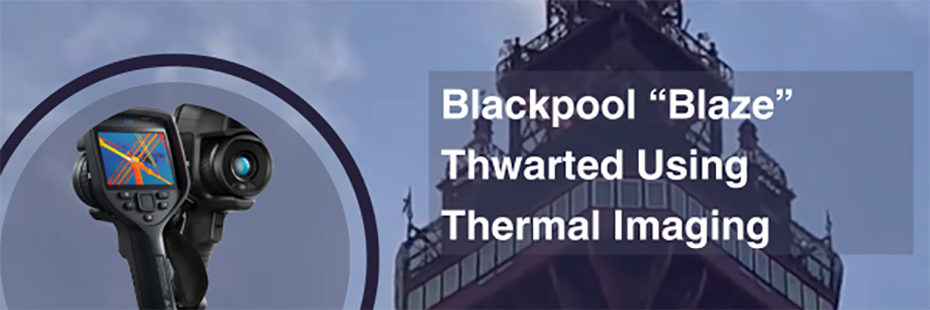 We hope every one of our customers, colleagues, and suppliers enjoyed the Christmas and New Year break. As a gift to you on this, the final night before Epiphany, we would like to tell you about our favourite news story from the festive period. It is a story that perfectly illustrates the efficacy of thermal imaging: Blackpool "Blaze" Thwarted Using Thermal Imaging!
Continue reading →
We hope every one of our customers, colleagues, and suppliers enjoyed the Christmas and New Year break. As a gift to you on this, the final night before Epiphany, we would like to tell you about our favourite news story from the festive period. It is a story that perfectly illustrates the efficacy of thermal imaging: Blackpool "Blaze" Thwarted Using Thermal Imaging!
Continue reading →Industry News
-
Thermal Imaging Identifies Source of Blackpool “Blaze”
 We hope every one of our customers, colleagues, and suppliers enjoyed the Christmas and New Year break. As a gift to you on this, the final night before Epiphany, we would like to tell you about our favourite news story from the festive period. It is a story that perfectly illustrates the efficacy of thermal imaging: Blackpool "Blaze" Thwarted Using Thermal Imaging!
Continue reading →
We hope every one of our customers, colleagues, and suppliers enjoyed the Christmas and New Year break. As a gift to you on this, the final night before Epiphany, we would like to tell you about our favourite news story from the festive period. It is a story that perfectly illustrates the efficacy of thermal imaging: Blackpool "Blaze" Thwarted Using Thermal Imaging!
Continue reading → -
FLIR’s Top Tips for Ensuring Energy Efficiency
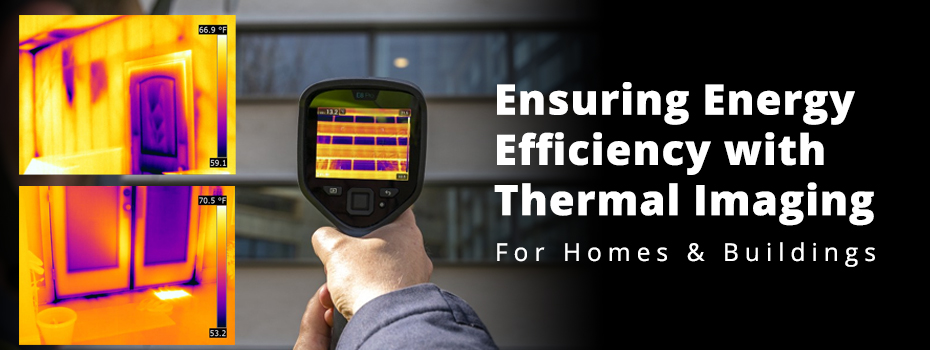 Last year as winter descended and energy prices rose, news outlets were awash with reports about charities, councils, and insurance companies using thermal imaging to pinpoint sources of heat loss. These stories made headlines because they detailed an innovative method that enabled patrons/customers to target insulation work effectively, subsequently reducing their energy consumption, heating bills, and carbon emissions. What in 2022 began as a little-known method of optimising energy efficiency has become increasingly popular throughout 2023. Now, as winter creeps in once more, ensuring homes are energy efficient is crucial. That’s why Teledyne FLIR has provided some top tips on what to look out for when conducting a thermal survey of your home.
Continue reading →
Last year as winter descended and energy prices rose, news outlets were awash with reports about charities, councils, and insurance companies using thermal imaging to pinpoint sources of heat loss. These stories made headlines because they detailed an innovative method that enabled patrons/customers to target insulation work effectively, subsequently reducing their energy consumption, heating bills, and carbon emissions. What in 2022 began as a little-known method of optimising energy efficiency has become increasingly popular throughout 2023. Now, as winter creeps in once more, ensuring homes are energy efficient is crucial. That’s why Teledyne FLIR has provided some top tips on what to look out for when conducting a thermal survey of your home.
Continue reading → -
News Roundup: Thermal Cameras Adopted by Multiple UK Organisations to Reduce Energy Bills & Emissions
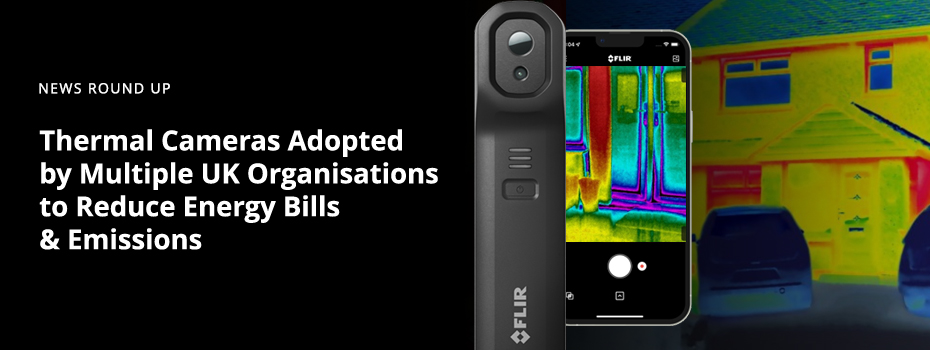 Rising energy prices and environmental urgency have inspired charities, councils, and companies across the UK to look for innovative methods of maximising the efficiency of British homes. One such method is thermal imaging. In 2022, we brought you multiple reports of organisations, including the charity Cambridge Carbon Footprint; South Somerset District Council; and Octopus Energy, providing thermal cameras to property owners for the purpose of identifying heat loss. Armed with this information, householders could target their insulation efforts effectively. Subsequently reducing their energy consumption, bills, and emissions. 2023 has seen even more councils and organisations adopt similar policies. Below are just a few instances that made headlines.
Continue reading →
Rising energy prices and environmental urgency have inspired charities, councils, and companies across the UK to look for innovative methods of maximising the efficiency of British homes. One such method is thermal imaging. In 2022, we brought you multiple reports of organisations, including the charity Cambridge Carbon Footprint; South Somerset District Council; and Octopus Energy, providing thermal cameras to property owners for the purpose of identifying heat loss. Armed with this information, householders could target their insulation efforts effectively. Subsequently reducing their energy consumption, bills, and emissions. 2023 has seen even more councils and organisations adopt similar policies. Below are just a few instances that made headlines.
Continue reading → -
International Men’s Day 2023: Oliver Fritchle, Electric Vehicle Pioneer
 It’s tempting to think that electric
vehicles are relatively new inventions. However, the race to manufacture a
viable electric car began not with Elon Musk and Tesla but over one hundred
years ago with Oliver Fritchle and Phaeton. Beginning his career as a chemist,
Fritchle became an innovative businessman and a pioneer in the world of EV
engineering.[1]
Continue reading →
It’s tempting to think that electric
vehicles are relatively new inventions. However, the race to manufacture a
viable electric car began not with Elon Musk and Tesla but over one hundred
years ago with Oliver Fritchle and Phaeton. Beginning his career as a chemist,
Fritchle became an innovative businessman and a pioneer in the world of EV
engineering.[1]
Continue reading → -
Unveiling Innovation: Join PASS LTD at the Manufacturing and Engineering North East Exhibition
 We are thrilled to announce that PASS LTD will be participating in the upcoming Manufacturing and Engineering North East Exhibition, set to take place on Thursday, 30th November, at the Newcastle Vertu Motors Arena.
Continue reading →
We are thrilled to announce that PASS LTD will be participating in the upcoming Manufacturing and Engineering North East Exhibition, set to take place on Thursday, 30th November, at the Newcastle Vertu Motors Arena.
Continue reading → -
International Men’s Day 2023: Helping Men in Construction with Their Mental Health
 This year’s International Men’s Day theme is “Zero Male Suicide”. One of the issues International Men’s Day aims to raise awareness of is the male suicide crisis. Men are three times more likely to die by suicide than women; a trend that is sadly concentrated within the construction industry, a male-dominated sector. The stigma surrounding mental illness and talking about mental health, particularly amongst men, has long been considered a factor contributing to rates of suicide. To redress this, the charity Mates in Mind and the online construction-based community On the Tools have set up initiatives to encourage honest discussions about mental well-being amongst construction workers.
Continue reading →
This year’s International Men’s Day theme is “Zero Male Suicide”. One of the issues International Men’s Day aims to raise awareness of is the male suicide crisis. Men are three times more likely to die by suicide than women; a trend that is sadly concentrated within the construction industry, a male-dominated sector. The stigma surrounding mental illness and talking about mental health, particularly amongst men, has long been considered a factor contributing to rates of suicide. To redress this, the charity Mates in Mind and the online construction-based community On the Tools have set up initiatives to encourage honest discussions about mental well-being amongst construction workers.
Continue reading → -
Defending Data Centres Using Teledyne FLIR Thermal Imaging
 As we come to rely on the internet,
data networks, AI, and cloud-based systems more and more, it’ll become
increasingly important to ensure the reliability and efficacy of data centres. Unplanned
downtime can be very costly both with respect to loss of earnings and business
reputation. A Teledyne FLIR case study estimates that data centre companies
lose $8000 every minute a plant is down due to an unexpected failure.[1]
Spotting potential issues before they become catastrophic faults could eliminate
unplanned downtime. Understanding this, Teledyne FLIR offers a range of thermal
imaging solutions specifically for this purpose.
Continue reading →
As we come to rely on the internet,
data networks, AI, and cloud-based systems more and more, it’ll become
increasingly important to ensure the reliability and efficacy of data centres. Unplanned
downtime can be very costly both with respect to loss of earnings and business
reputation. A Teledyne FLIR case study estimates that data centre companies
lose $8000 every minute a plant is down due to an unexpected failure.[1]
Spotting potential issues before they become catastrophic faults could eliminate
unplanned downtime. Understanding this, Teledyne FLIR offers a range of thermal
imaging solutions specifically for this purpose.
Continue reading → -
Working in Explosive Locations with the Teledyne FLIR Cx5 Hazardous Area Thermal Camera
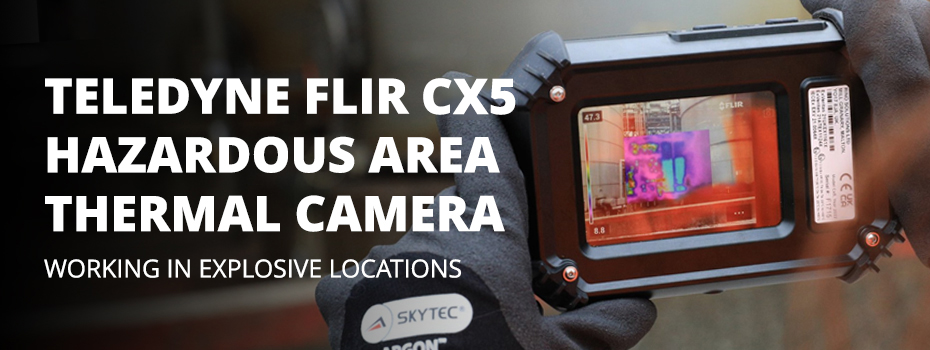 Explosions in hazardous areas are extremely costly. They endanger invaluable lives and can result in damage totalling hundreds of millions of pounds. Explosions occur when volatile gasses or dust in the atmosphere reach ignition temperature. According to conservative estimates, a major dust explosion takes place somewhere around the globe every 2.9 days! Predictive maintenance routines that include regular T-class temperature checks are an effective method of preventing such catastrophes. However, as suggested by their name, hazardous locations are dangerous. Therefore, unless your inspection tools are suitably certified for the site/s you are working in, you could increase your risk of explosion. Thankfully, Teledyne FLIR has designed an ATEX/IECEx-certified, pocket-sized thermal camera. It allows you to capture thermal images and temperatures without the need for hot work permits, and makes T-class surveys quick, safe, and easy.
Continue reading →
Explosions in hazardous areas are extremely costly. They endanger invaluable lives and can result in damage totalling hundreds of millions of pounds. Explosions occur when volatile gasses or dust in the atmosphere reach ignition temperature. According to conservative estimates, a major dust explosion takes place somewhere around the globe every 2.9 days! Predictive maintenance routines that include regular T-class temperature checks are an effective method of preventing such catastrophes. However, as suggested by their name, hazardous locations are dangerous. Therefore, unless your inspection tools are suitably certified for the site/s you are working in, you could increase your risk of explosion. Thankfully, Teledyne FLIR has designed an ATEX/IECEx-certified, pocket-sized thermal camera. It allows you to capture thermal images and temperatures without the need for hot work permits, and makes T-class surveys quick, safe, and easy.
Continue reading → -
Gas Safety Saves Energy & Reduces Bills
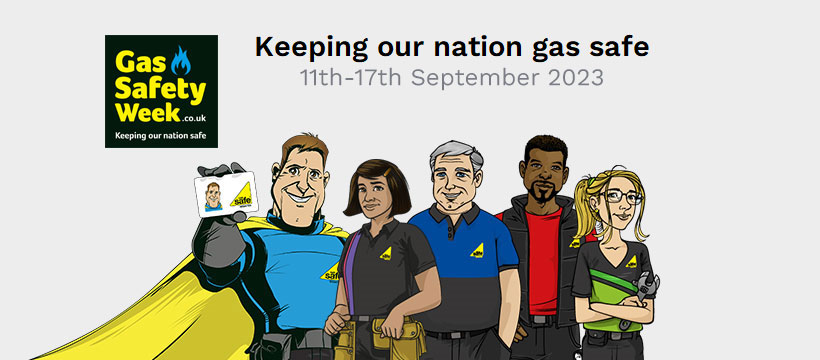 The ongoing cost of living crisis has understandably prevented many people from undertaking essential home maintenance work. To reduce spending, homeowners leave simple safety checks or repair jobs unaddressed. Far from saving households money, avoiding necessary upkeep is estimated to cost the average home £1885 a year, contributing to an overall additional expenditure of £6.8bn across households in the UK. One task that property owners often procrastinate is having their gas boiler safety checked by a qualified Gas Safe registered engineer. Still, with autumn and winter fast approaching, not having your boiler safety checked could prove more expensive than having it done.[1]
Continue reading →
The ongoing cost of living crisis has understandably prevented many people from undertaking essential home maintenance work. To reduce spending, homeowners leave simple safety checks or repair jobs unaddressed. Far from saving households money, avoiding necessary upkeep is estimated to cost the average home £1885 a year, contributing to an overall additional expenditure of £6.8bn across households in the UK. One task that property owners often procrastinate is having their gas boiler safety checked by a qualified Gas Safe registered engineer. Still, with autumn and winter fast approaching, not having your boiler safety checked could prove more expensive than having it done.[1]
Continue reading →



